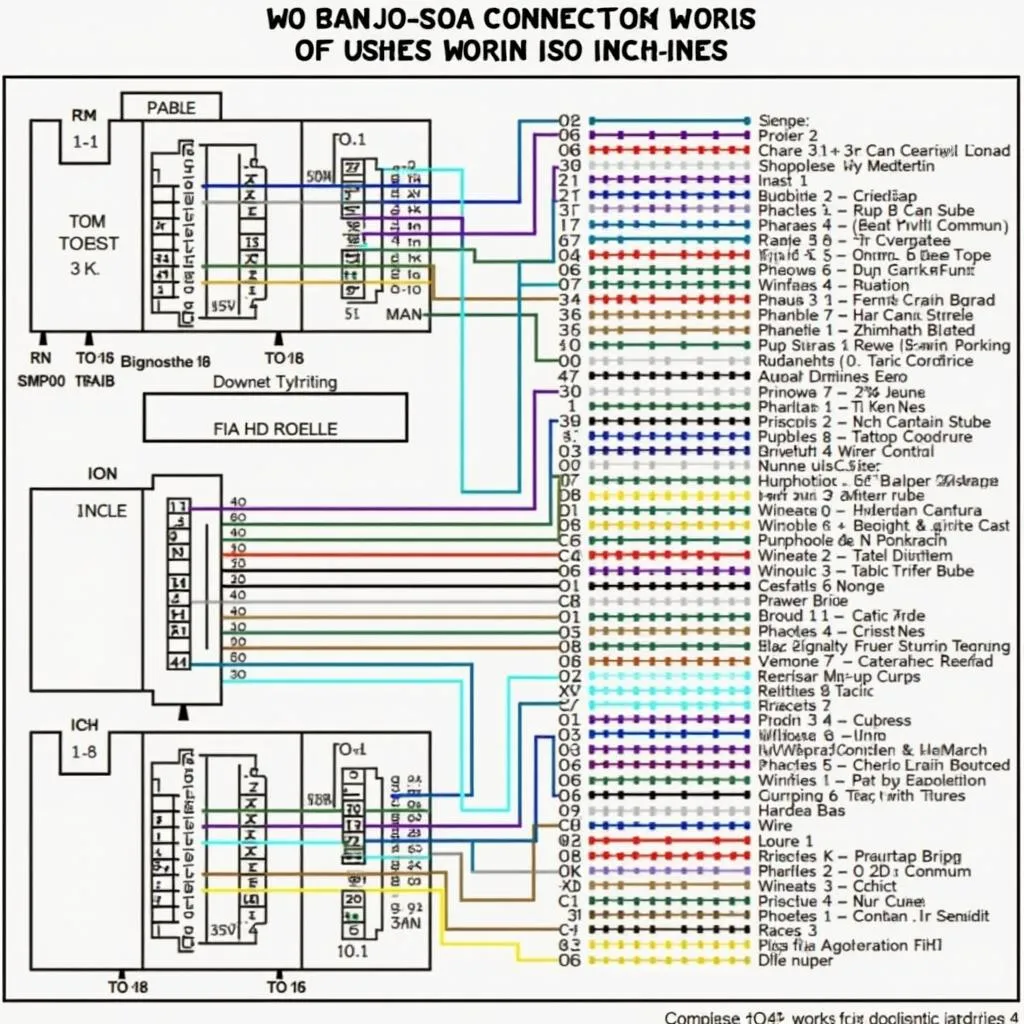“Red to red, yellow to yellow” – sounds familiar, right? Car audio wiring can feel like solving a colour-coded puzzle, especially when dealing with the ISO standard. Whether you’re trying to install a new stereo, troubleshoot electrical gremlins, or just want to understand your car’s electrical system better, this guide is for you.
Decoding the ISO Standard
The ISO standard was introduced to simplify car audio connections. Before its inception, each car manufacturer had a unique wiring system, leading to compatibility headaches for car audio enthusiasts. The ISO standard aimed to create a universal system where most car radios, regardless of the manufacturer, could be easily installed or replaced.
Common Car Radio Problems and Their Causes
While the ISO standard simplified things, several problems can still arise:
1. No Power: Your car radio is as silent as a tomb, even after a proper installation. This could be due to a blown fuse, a faulty ignition switch, or a wiring issue in the power supply line.
2. Poor Reception: If your radio struggles to pick up stations, the antenna connection could be loose, the antenna itself might be damaged, or there might be interference from other electronic components in your vehicle.
3. Sound Issues: Distorted sound, one speaker not working, or intermittent audio are common problems. These issues could point to a damaged speaker, a faulty amplifier, or a problem with the wiring harness.
4. Erratic Behavior: Does your car radio randomly turn on and off, refuse to eject CDs, or display incorrect information? This could indicate a problem with the radio unit itself, a faulty ground connection, or even a software glitch.
Identifying the Root of the Problem
Before you grab your toolbox, it’s crucial to diagnose the issue correctly. Here’s how:
1. Visual Inspection: Start with the basics. Check for any loose connections, damaged wires, or blown fuses. Pay close attention to the ISO connector and the wiring behind the radio.
2. Testing with a Multimeter: A multimeter is your best friend when troubleshooting electrical problems. It can help you check for continuity in the wiring, voltage at various points, and identify any shorts.
3. Diagnostic Software: For more complex issues, consider using professional-grade diagnostic software. This software can communicate with your car’s computer, read error codes, and provide valuable insights into the problem. Some reputable software options include those offered by Cardiagtech, known for their reliability and comprehensive diagnostic capabilities.
 Car Radio Wiring Diagram
Car Radio Wiring Diagram
Essential Tools for Car Audio Repair
Having the right tools can make your car audio repair journey smoother. Here are a few essentials:
- Wire Strippers/Cutters: For stripping insulation off wires and making clean cuts.
- Crimping Tool: Used to create secure connections between wires and terminals.
- Electrical Tape: For insulating wire connections and preventing shorts.
- Multimeter: A must-have for testing voltage, continuity, and resistance.
- Torx/Panel Removal Tools: These help you safely remove interior panels and access the car radio and wiring without causing damage.
Troubleshooting ISO Car Radio Wiring
Problem: No power to the radio.
Possible Cause: Blown fuse in the fuse box.
Solution:
- Locate the fuse box. (Consult your car’s manual for its location).
- Identify the fuse related to the car radio.
- If the fuse is blown, replace it with a new one of the same amperage.
 Car Fuse Box Location
Car Fuse Box Location
Problem: Speakers not working.
Possible Cause: Incorrect wiring of speaker wires.
Solution:
- Check the wiring diagram for your specific car radio and speaker system.
- Ensure that the positive (+) and negative (-) wires of each speaker are connected to the corresponding terminals on the car radio and the speaker itself.
Frequently Asked Questions (FAQs)
Q1: What do the different Iso Car Radio Wiring Colours mean?
A: Each colour represents a specific function:
- Red: Usually indicates the main power supply wire.
- Yellow: Typically represents the constant 12V supply that maintains radio presets and settings.
- Black: Almost always indicates the ground wire.
- Blue/Blue White: Often used for the power antenna or amplifier remote turn-on.
- Speaker Wires: These usually come in pairs with contrasting colours or a stripe to differentiate positive and negative:
- Front Speakers: White (+), White/Black (-) and Grey (+), Grey/Black (-).
- Rear Speakers: Green (+), Green/Black (-) and Purple (+), Purple/Black (-).
Q2: Can I install an aftermarket car radio with an ISO connector in my car?
A: Most cars manufactured after the mid-1990s in Europe and other regions that adopted the standard have ISO connectors. However, it’s always best to consult your car’s manual or contact a qualified car audio installer to confirm compatibility.
Q3: My car doesn’t have ISO connectors. What are my options?
A: You can purchase an adapter harness that connects your car’s factory wiring to the ISO connector on your new car radio. These adapters are vehicle-specific, so ensure you choose the correct one for your car model.
Q4: I’m experiencing electrical issues after installing my car radio. What should I do?
A: Double-check all connections and ensure they are secure and properly insulated. If the problem persists, it’s best to consult with a qualified auto electrician or car audio professional to diagnose and fix the issue.
Need Expert Assistance?
Navigating the world of car audio wiring can be tricky. If you’re facing persistent issues or are unsure about any step of the installation or repair process, don’t hesitate to reach out to the experts at Cardiagtech. We offer top-notch diagnostic services, expert advice, and a wide range of products that can help get your car audio system back on track.
Contact CARDIAGTECH today at +1 (641) 206-8880 or CARDIAGTECH[email protected]. Our office is located at 276 Reock St, City of Orange, NJ 07050, United States.
